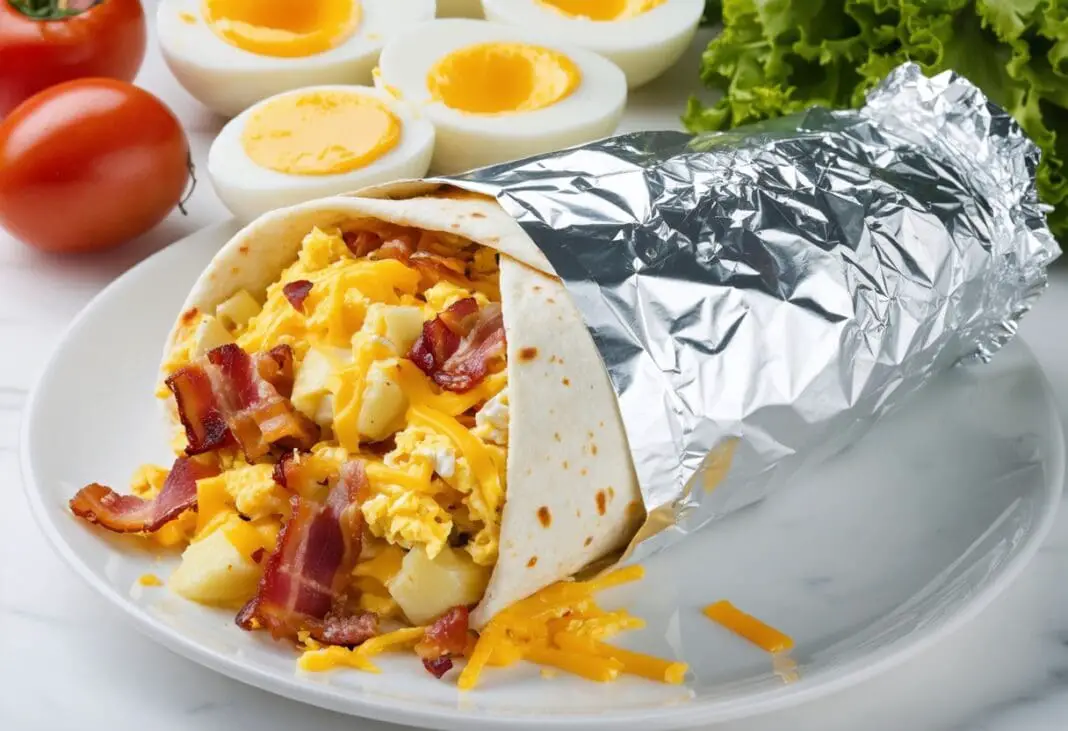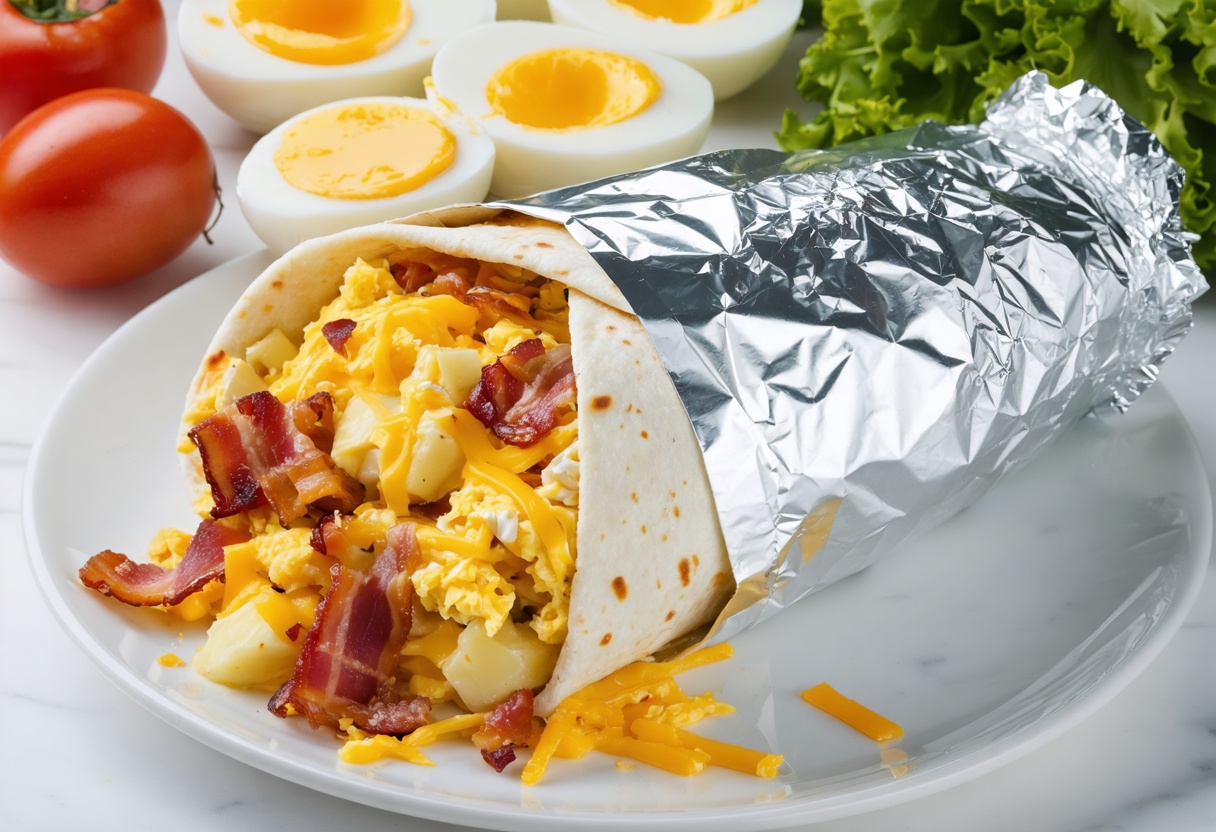Nothing ruins a morning quite like biting into a cold, soggy breakfast burrito that was piping hot just an hour ago. Most people resort to expensive insulated bags or complicated warming methods, but there’s a surprisingly simple solution hiding right in your car. This genius hack uses something you already have access to and keeps breakfast burritos warm for hours without any extra equipment or fancy gadgets.
Your car’s heated seats work better than expensive warmers
Car seat heaters aren’t just for keeping people comfortable during winter drives. They maintain a consistent, gentle heat that’s perfect for keeping food warm without overcooking it. Unlike microwave reheating that creates hot spots and cold centers, heated car seats provide even warmth distribution. The temperature stays steady around 100-110°F, which is ideal for maintaining food safety while preventing that dreaded soggy texture.
Simply wrap your burrito in aluminum foil and place it on the heated seat before starting your commute. The foil helps distribute heat evenly and prevents any mess from reaching your upholstery. This method has been tested by countless commuters who swear by its effectiveness. Turn on the seat heater to low or medium setting, and your breakfast will stay perfectly warm for hours.
Aluminum foil makes all the difference in heat retention
The secret isn’t just the car seat heater – it’s how you wrap your burrito. Aluminum foil acts like a tiny oven, trapping steam and heat while allowing for gentle, even warming. Regular plastic wrap or paper towels don’t provide the same insulation properties. The foil creates a barrier that prevents moisture loss, which is what typically makes burritos dry and unappetizing after sitting for extended periods.
Make sure to wrap your burrito completely, crimping the edges to create a sealed packet. This prevents any filling from leaking out and ensures maximum heat retention. Some people add a paper towel inside the foil to absorb excess moisture, but this step isn’t always necessary. The key is creating an airtight seal that keeps the steam circulating around your food.
Timing matters more than most people realize
The biggest mistake people make is wrapping cold burritos and expecting them to heat up on the car seat. Start with a burrito that’s already hot – either freshly made or properly reheated in the microwave. The car seat heater maintains temperature rather than raising it, so beginning with a hot burrito is crucial for success. Heat your burrito until it’s almost too hot to handle, then immediately wrap and place it on the heated seat.
Most car seat heaters take 2-3 minutes to reach optimal temperature, so turn yours on before you finish preparing your breakfast. This ensures the seat is ready when you place your wrapped burrito down. Professional food vendors use similar timing principles when keeping large quantities of food warm for extended periods.
Weight distribution affects heating efficiency
Some car seat heaters are weight-activated, meaning they only turn on when they detect someone sitting on them. This can be problematic for lightweight burritos that don’t trigger the sensors. If your seat heater turns off randomly, try placing a small weight next to your burrito – a water bottle or book usually does the trick. The additional weight ensures the heating elements stay active throughout your journey.
Position your wrapped burrito in the center of the seat where the heating elements are typically concentrated. Avoid placing it too close to the edges where heat distribution might be uneven. If you’re carrying multiple burritos, space them out rather than stacking them to ensure each one receives adequate heat exposure.
Insulated bags provide extra protection
While the car seat heater does most of the work, adding an insulated bag creates a double-layer warming system. Place your foil-wrapped burrito inside a small insulated lunch bag before setting it on the heated seat. This combination traps even more heat and provides insurance against temperature fluctuations if your car’s electrical system is inconsistent.
Insulated bags also protect your car’s upholstery from potential spills and make cleanup easier. Choose a bag that’s slightly larger than your burrito to allow for air circulation, which helps maintain even heating. This method works especially well for longer commutes or when you need to keep food warm for several hours.
Different heat settings work for different situations
Low heat settings work best for shorter trips under an hour, while medium settings are better for longer commutes. High heat can actually work against you by creating too much moisture, which leads to soggy tortillas. The goal is maintaining temperature, not continuing to cook the food. Experiment with your car’s specific settings to find what works best for your typical travel time.
If your commute varies in length, start with a lower setting and adjust upward if needed. It’s easier to add more heat than to fix an overcooked, dried-out burrito. Some newer cars have multiple heat zones in their seats – use the lower back area for gentler warming if your burrito is particularly delicate or contains ingredients that don’t reheat well.
Safety considerations most people overlook
Food safety rules still apply even when using this warming method. Don’t leave burritos containing dairy, eggs, or meat on heated seats for more than two hours total, including preparation time. The “danger zone” for bacterial growth is between 40-140°F, but car seat heaters typically stay above this range when functioning properly. Use a food thermometer to check that your burrito maintains an internal temperature above 140°F if you’re keeping it warm for extended periods.
Never leave food warming on heated seats in an unattended vehicle, especially during hot weather when interior temperatures can become extreme. The combination of seat heaters and ambient heat can create temperatures that actually cook your food further or create unsafe conditions. Always prioritize food safety over convenience, and when in doubt, eat your burrito sooner rather than later.
Alternative warming methods for cars without heated seats
Cars without heated seats can still keep burritos warm using the dashboard and sunlight method. Wrap your burrito in foil and place it on the dashboard in direct sunlight. The greenhouse effect inside your car creates consistent warmth, though this method works best during sunny days. Use a towel or cloth underneath to prevent the foil from sliding around while driving.
Another option is using your car’s heating vents by positioning the wrapped burrito near but not directly on a floor vent with the heat running. This method requires more attention since you’ll need to monitor the temperature and move the burrito occasionally to prevent hot spots. It’s less reliable than heated seats but works in a pinch during colder months when you’re already running the heater.
What ingredients hold heat better than others
Dense ingredients like beans, rice, and potatoes retain heat longer than lighter fillings like lettuce or tomatoes. When making burritos specifically for car warming, load up on these heat-holding ingredients and add fresh vegetables just before eating. Cheese acts as an excellent heat conductor and helps keep the entire burrito warm from the inside out.
Avoid ingredients with high water content if you plan to keep burritos warm for extended periods. Items like fresh salsa or watery vegetables can create excess moisture that makes tortillas soggy. Instead, opt for thicker salsas, well-drained beans, and ingredients that complement the warming process rather than fight against it. The goal is creating a burrito that actually improves with gentle heating rather than deteriorating.
This car seat heating method transforms morning commutes and makes meal prep more practical for busy schedules. The combination of proper wrapping, timing, and temperature control creates restaurant-quality warm burritos hours after cooking. Next time someone complains about cold breakfast on the go, share this simple trick that turns every heated car seat into a portable food warmer.
Perfect Make-Ahead Breakfast Burritos
Course: Breakfast4
servings15
minutes10
minutes450
kcalThese hearty breakfast burritos stay hot for hours using a simple car seat warming trick.
Ingredients
8 large eggs
1 tablespoon olive oil
1 red bell pepper, seeded and diced
1/2 red onion, diced
1 can (14.5 oz) black beans, drained and rinsed
1 1/4 cups shredded cheddar cheese, divided
4 large burrito-size flour tortillas
1/2 cup prepared salsa
Salt and pepper to taste
Directions
- Heat olive oil in a large skillet over medium heat. Add diced red pepper and onion, cooking for 3-4 minutes until vegetables begin to soften. Season with salt and pepper to taste.
- Beat eggs in a bowl and pour into the skillet with vegetables. Scramble eggs over medium-low heat, stirring frequently until just set but still slightly creamy. Remove from heat immediately to prevent overcooking.
- Warm tortillas in microwave for 30 seconds or on a dry skillet for 10 seconds per side. This makes them more pliable and prevents cracking during rolling.
- Place each tortilla on a flat surface. Add 1/4 of the scrambled egg mixture, black beans, and cheese to the center of each tortilla. Top with a spoonful of salsa, being careful not to overfill.
- Fold the bottom edge of the tortilla up over the filling, then fold in both sides. Roll tightly from bottom to top, keeping the sides tucked in to prevent filling from escaping.
- If eating immediately, serve hot. For the car warming method, wrap each burrito individually in aluminum foil while still warm, creating a complete seal by crimping the edges.
- Place foil-wrapped burritos on heated car seat set to low or medium setting. The gentle heat will keep burritos warm for 2-3 hours during commutes.
- For meal prep, cool completely and freeze wrapped burritos for up to 3 months. Thaw overnight and reheat in microwave before using car warming method.
Notes
- Always start with hot burritos when using car seat warming – the heat maintains temperature rather than raising it
- Some car seat heaters are weight-activated, so place a water bottle nearby if the heating turns off
- Avoid high water content ingredients like fresh tomatoes if keeping warm for extended periods
- For food safety, don’t keep burritos in the danger zone (40-140°F) for more than 2 hours total
Frequently asked questions
Q: How long can I keep a burrito warm on a heated car seat?
A: For food safety, don’t exceed 2 hours total warming time for burritos containing eggs, dairy, or meat. The car seat method maintains temperature rather than cooking, so start with a hot burrito and monitor the time.
Q: What if my car doesn’t have heated seats?
A: Use the dashboard and sunlight method by placing foil-wrapped burritos on the dashboard in direct sun. Alternatively, position them near floor heating vents with the car heater running, though this requires more attention.
Q: Why does my seat heater turn off when I put food on it?
A: Many car seat heaters are weight-activated and need sufficient pressure to stay on. Place a water bottle or book next to your burrito to maintain the weight threshold that keeps the heating elements active.
Q: Can I use this method with other foods besides burritos?
A: Yes, this works well with wrapped sandwiches, quesadillas, and other handheld foods that benefit from gentle warming. The key is proper wrapping in foil and starting with already-hot food.


